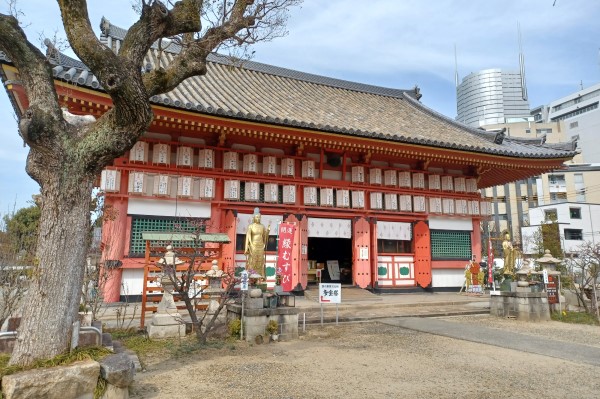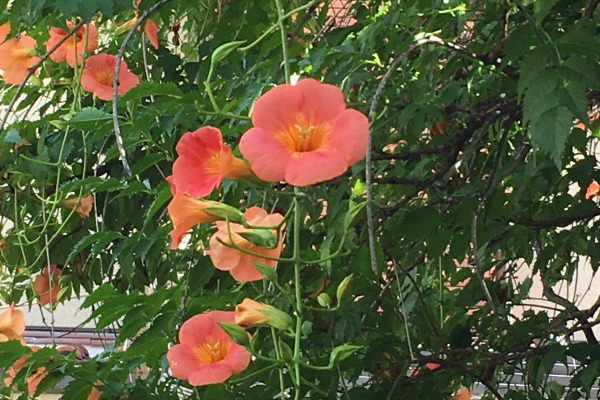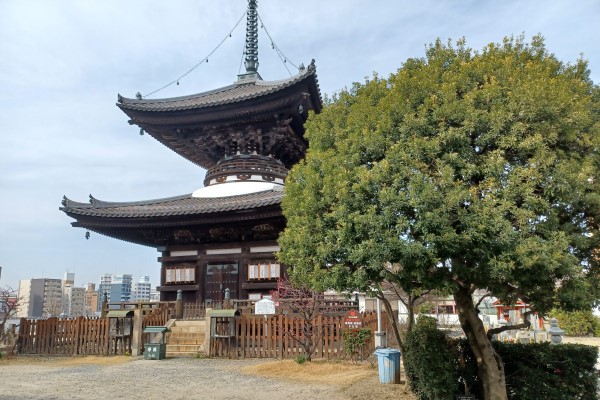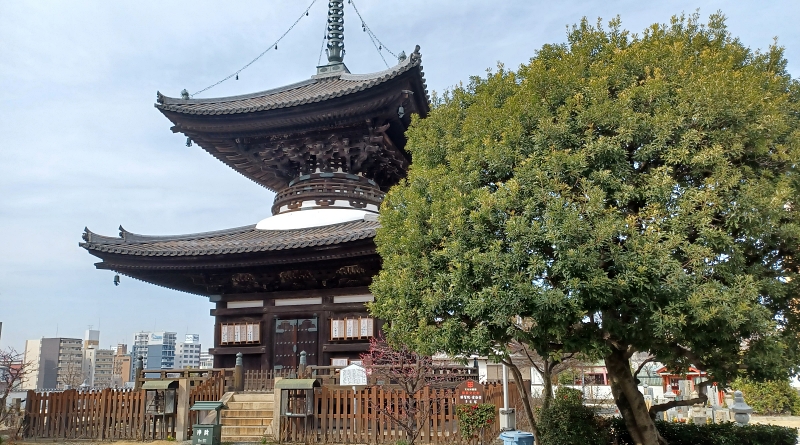Osaka’s Shomanin Aizendo
On the Uemachi Plateau are hundreds of shrines and temples, many dating back hundreds or even a thousand years, such as Shitenno-ji Temple, Ikutama Shrine, and Kozu Shrine. Among these really old and historic temples, Shomanin Aizendo, or affectionately Aizen-san. This temple is not only is quite famous but is dear to the people of Osaka.
The History of Shomanin Aizendo
Aizen-san dates back to 593 C.E. when Prince Shotoku first built Shitenno-ji Temple. Prince Shotoku also built seven shrines to protect Shitenno-ji, called Shichi-Gu [七宮], along with four additional temples meant to provide various forms of social welfare known as Shiko-In [四箇院].
Later, one of Shiko-in, Seyaku-in, was known as Shoman-in [勝鬘院] and was the precursor of Aizen-do. As the temple gradually became more popular, it was later known as Aizen-do[愛染堂] for the deity, Aizen Myouou [愛染明王], that is enshrined there.
Temple Grounds of Shomanin Aizendo
Shomanin Aizendo is located quite close to Shitenno-ji Temple or Shitenno-ji Yuhigaoka Station of Osaka Metro Tanimachi Line. However, it may be a bit hard to find as it is on the block away from the large street.

Aizen-do burned down during the Ishiyama War, between the Ishiyama Honganji and Nobunaga. Many years later, Tokugawa Hidetada, the second shogun of the Edo Period rebuilt the temple.
Aizendo’s hondo enshrines Aizen Myouou, who turns your worldly desires into self-realization. Unfortunately, you can only see Aizen-myouou on special occasions, like Aizen Matsuri or new year days.

Aizendo has a unique way of praying. First, you have to get one of their special pieces of paper near the collection box and write down your hopes and wishes. Then, hold the paper with your hands, lifting them the higher than your nose, and chant “Un, Shicchi, Sowaka” seven times before depositing your paper and money in the collection box.
On the temple grounds just ajar of the entrance, is a tree called Aizen Katsura [愛染かつら]. As you can see, Chinese trumpet vines drape around this large katsura tree. People think the way the vines wrap around the tree is reminiscent of a lovers’ embrace. The tree is therefore a symbol of en-musubi, a concept now almost exclusively associated with romantic destiny.

The Oldest Building in Osaka City
The most historically important thing on the temple grounds is the pagoda just behind the hondo. This pagoda is the oldest building in Osaka City. The pagoda burnt down during the Ishayama War, but Hideyoshi rebuilt the pagoda in 1597. Since then, it has never remained intact, unlike many other buildings in Osaka.

Inside the pagoda is a statue of a very rare 12 armed Buddha called Dainichi-Daishou-Kongo-Son [大日大勝金剛尊]. The statue was commissioned by Hideyoshi and enshrined in the pagoda in when it was restored in 1597. Throughout most of the year, the doors of the pagoda remains tightly closed and only open during Aizen Matsuri.
Aizen Matsuri is the oldest summer festival in Osaka. The festival takes place June 30th through July 2nd every year. Together with Tenjin Matsuri and Sumiyoshi Matsuri, Aizen Matsuri is one of the three big summer festivals in Osaka.



Leave a Reply